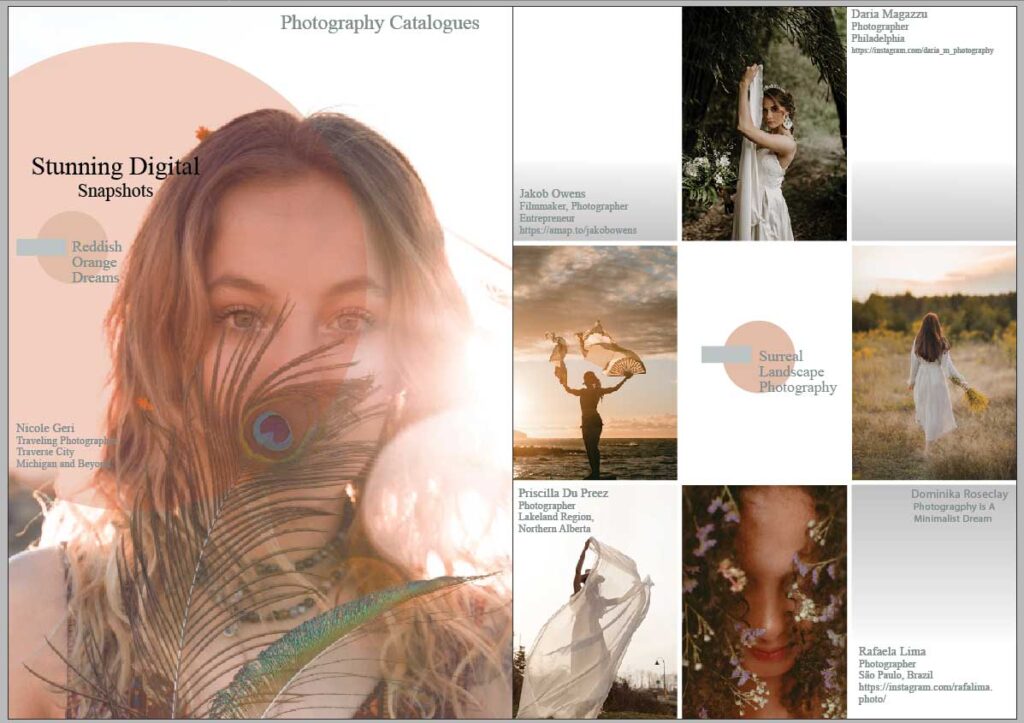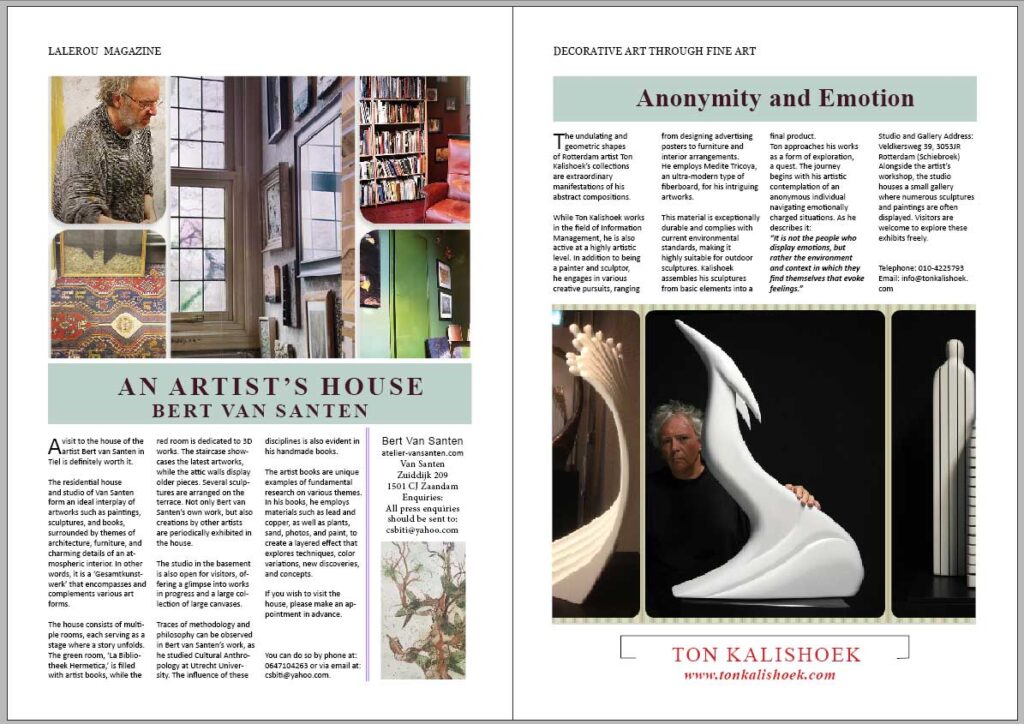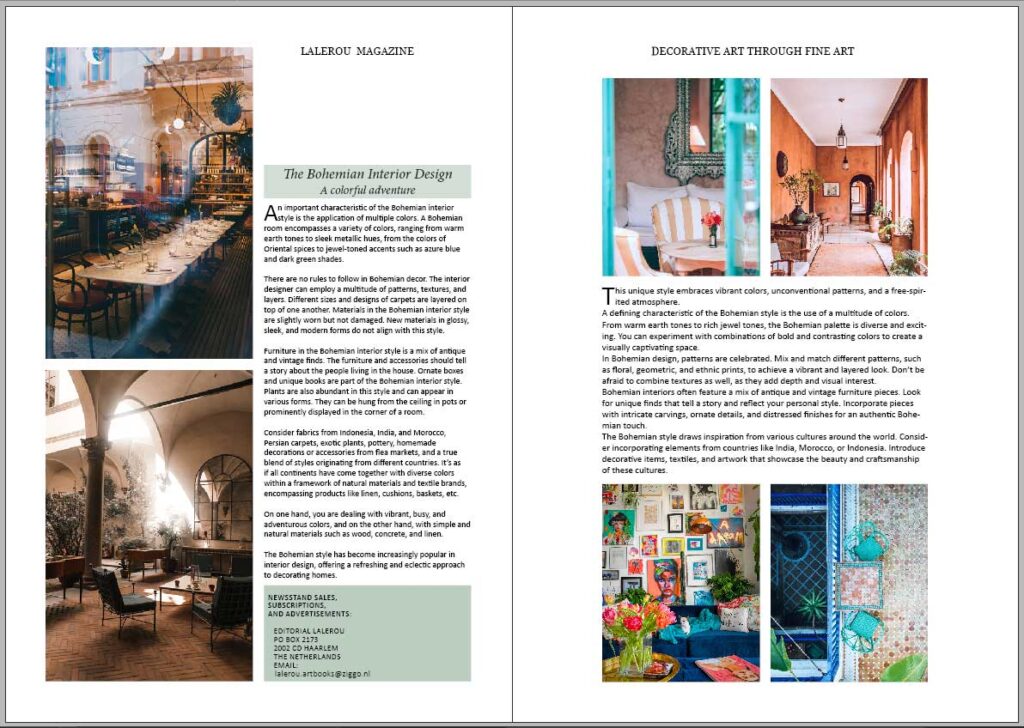Art Catalogs
Design your art catalog/art book!
Art book- Art Catalogue Design

Why create an art catalog?
How to promote your art? Here on this page, we discuss the benefits of art catalogs and artist catalogue/ catalogs. It helps to commercialize, promote, and present artwork. Cataloging art is a fantastic workout for artists, designers, and creative brands. It generates their marketing objectives to sell their artwork. Archiving sites use catalog art for organizing and archiving art. At the same time, we focus on presenting art and publishing art books and catalogs. We pay attention to displaying artwork with a great theme and valuable content. Artists’ books, books for galleries, and for design brands are presentational. The artists can reach the same results with the artist catalogue as they get by advertising through their efficient presence on the publication level and the virtual sites.
Are you an artist, gallerist, designer, or collector? Our art books and catalogues are great marketing tools for presenting your work and offering it to collectors, art admirers, and potential buyers. Show them in a gallery setting, send them through the mail, and give them as a gift to an art dealer. Print and sell them and enjoy income through sales.

Catalogue Art: Marketing
What are the benefits of artists catalogues? Exhibitions of solo shows, for a limited period, are done and over.
On the other hand, the art exhibition catalogues in print are art books you can hold in your hand and place on sideboards and salon tables, not meant for reading in a hurry on an electronic device.
You can use your art catalogues in your emails and send them to the buyers and galleries.
You can upload art catalogues PDFs on Facebook, Twitter, and Pinterest. On Instagram, you can only upload catalogs as screenshots and videos. We can also provide professional screenshots and videos for you, as you can upload them as mp4 on YouTube. So, art catalogues PDFs can offer advertising materials on social media.
Catalogue Art: Information
These are related tips and resources: to provide a specific provenance record, we need the following information:
The title, artist name, dimensions, creation date, medium, and subject matter. Also, you can assign your work to a location. That makes your publication more personal and narrative. The details about the place of creation attract more social curiosity and attention.
Necessary to take professional photos of your artwork. It is essential to provide high-quality images for the catalogues.
Consider publishing the artwork’s status and the availability or sold status. Especially if a catalogue is for an actual exposition or art event, we will send you an email for the recording of the descriptions of each piece and share thoughts and inspirations for the layout.
A chronology of major art-related events is necessary after the opening essay. A list accompanied by illustrations specified by detailed information creates more professionality.
Avoid random order. The exhibition history and the received recognition of awards are crucial information.
In an article about Exhibition Catalogues, Michael Glover wrote: “No exhibition of any pretension is complete without lasting proof of its existence, preferably in print on coated paper”: What Are Exhibition Catalogues for?
Start an art book project with us: Contact form art book.

Catalogue Art: Final tips
Most Artists believe the catalogue must contain only the current work and should not be retrospective. Mixing the past and the present is another option. At the same time, order new objects, especially if you intend to sell. This attitude benefits from notable works. It highlights the style and neglectful of time creation. It helps the creator to reproduce his artwork later in another setting.
Testimonials, quotes in the press, or recognized art critics, impact your content positively. We are cohesive, understandable, and straightforward. Avoiding lengthy interpretations and emphasizing only the considerable milestones “is a pre.” Ignoring the non-major events in art cataloging is essential.
The contextual information can include the artistic career of only a subset of works. Which typically focuses on a single exhibition or collection or a specific period.
To get more recognition, producing a hard-copy publication, is a better choice rather than a small book or brochure.
A reasonable page range is about 15 to 50 pages. But remember that these are only recommendations. We choose a distinct layout line, a unique theme, and different content for each situation.
It is necessary to consider the privacy of names and the artwork’s owner and refer them to a private collection as appropriate.
Three industry experts have their say on Exhibition Catalogue: What Makes a great Exhibition Catalogues?

Catalogue Art: Statement
Adding an artist statement is also an option. It is not about the artist’s bio but a statement that resonates with the voice of artists. It conveys their work through their own words. Think about 50 to 100 or 150 to 200 words or even a more extended version. There are templates across the internet about “How to write an artist statement,” a recent phenomenon that started in the 1990s, but unnatural and not functional for us. The most famous artists did not use templates for their statements, which remain forever engraved in art’s memory.
Klimt stated once: “I have never painted a self-portrait. I am less interested in myself as a subject for a painting than I am in other people, above all women…There is nothing special about me. I am a painter who paints day after day, from morning to night…Whoever wants to know something about me… ought to look carefully at my pictures.”
Klimt’s words resound when we are viewing his works.
Catalogue Art: Method
We give shape to the work in progress following four narratives:
- Art acquisition details, a short bio, a list of gallery exhibitions,
- Support the authenticity of art content.
- Including the artist and designer’s personal narrative experience
- Using distinctive aesthetic presentation features
Before proceeding with your request, we will show you other art books and templates. Further, we gather ideas and inspirations through different best templates.
We include the received information for all your accomplishments with easy access to detailed data. It is possible for a solid resume and an illustrated book to become a historical record and to get an ISBN. You can contact museums and library’s acquisitions departments through an official publication. Send them copies and build your network.
You can commission us to include a short or long essay divided into pages. We gather every vital issue and consider what goes together and what stands out. In general, we prefer the book above the digital version. You can keep the electronic pdf for future use for more sales, editing, and republishing. Even with high-quality photos, poor print paper, binding material, or inadequate cover fails. Quality drives sales and is the Marketing key.
If you want to include contextual essays in your catalogue, we can help. The information about your cultural background and art-historical influences always fascinates readers. Your favorite choices, priorities, medium choices, methods, and techniques can form your essay.
Rick Casali discusses the value of Sotheby’s Auction catalogues and what to look for when making an online purchase: Art Books Part II Sotheby’s Catalogues.

Catalogue Art: Types
Are you a gallery owner willing to realize your projects as an art book? To keep track of your artwork, figure out how to visualize art to book art. By visually appealing your catalogue you increase your exposure. You enhance the impact of your artwork and professionalize your expertise. Cataloguing your artwork expands your artistic network. It is a clear and smooth process if you reach the right experts, and it results in positive outcomes in your creative career and has an impact for a long time.
We create various layouts in our editorial work. Does your request as an artist or gallery owner include personal records? Or remarkable stories? In that case, we exert ourselves to voice your demand through your quotes and interviews.
We often speak to museums and galleries. It is better to understand art books’ needs and editorial values. These values and properties make an art catalogue superior.
See here a list of diverse types of art catalogs:
Art catalog/ Art catalogue lists: fine art catalogs, contemporary art catalogues, artist catalogue, art collection catalogs, museum catalogues, gallery catalogues, art auction catalogues, exhibition catalogs, sculpture catalogs, painting catalogs, photography catalogs, vintage art catalogues, art poster catalogs, antique catalogues, design catalogues, art event catalogs, art catalogues for gifts, art catalogues for interior design, artist portfolio catalogs, art event catalogs, artbooks, art book design
Behind the studio doors, Natasha Newton explains her choices on Inspiring Art Books.
To Conclude...
Here by Lalerou, we tell the story of art by producing art catalogs. Our journey is engaging, narrative and illustrative.
Request your art book and art catalogue in the following link: Contact form!